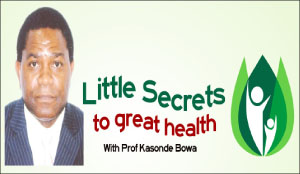
• Stress can be defined more simply as the pressure placed upon a person by events around them which make them restless.
I SAW a lion for the first time when I was 11years old. I had seen a few on the nature documentaries on the black and white television set at home. However, the experience of seeing one in real life was something else.
In the 1970s there was a ZOO in Kitwe that straddled between Kitwe Central to the South and Parklands and Riverside to the North East.
The Freedom Park was next to it to the west. The Freedom Park was a sprawling play area covering the width of 3 streets bringing traffic from the city centre.
Now what remains off it is a stuttering attempt to convert it into a Shopping Mall. There was Independence Avenue, Presidents Avenue and Lumumba Road that carried traffic from the city center and off loaded it into Freedom Avenue.
The park was traversed by a shallow stream called the Kitwe stream. The Freedom Park and the Kitwe ZOO were separated by Freedom Avenue as it run towards the Parklands Shopping area. The Freedom Park was on your left and the ZOO on your right as you faced the Parklands Shopping Centre on Freedom Avenue.
If you go there now, you will find the construction of a Shoprite Shopping Mall exactly where the cage for the Lions used to be.
The Kitwe stream continues under the bridge and roundabout at Freedom Avenue and Chiwala Avenue. This stream created a plush green beautiful environment both for the park and the Kitwe ZOO.
There were three lions in the cage. One of them was laying lazily at the edge of the wire fence when we arrived.
The wire fence that enclosed them was several meters high, as if to suggest how difficult it was to contain this lively cat.
The walk way was only a few feet from the edge of the fence, so I got a good view of the animal. It was a big animal with a powerful upper body. The muscles rippled through its shoulder with every movement.
The fur was a dry tanned brown that blended easily with the arid soil of the ground on which it lay. A hairy full mane covered its neck giving it an elegant look.
When the animal rose to full height from rustling noises of our feet across the walkway, our whole party stopped.
There was no doubt in my mind at that point why the lion was called the king of the jungle. When the ZOO Warden threw some meat into the cage the Lion roared. The sound sent a chill done my spine and the hairs on the back of my neck stood up.
Inspite of the doubled ring fence over 20 metres high our little party retreated. It was an air curdling roar that left us all convinced that the lion was truly the king of the jungle. The chunk of meat did not hit the ground; it was devoured in mid air by three hungry lions.
When I think of stress, it is just like a hungry lion within our bodies. When it is allowed to grow it is a ferocious beast and will begin to eat the organs within us.
In talking about stress I want to begin, by admitting that many people are a little skeptical about stress as a cause of disease.
In fact some people consider some stress an inevitable part of life and something that gives you an extra competitive edge. I am sure they are quite right. However, the type of stress that causes disease is stress that has gone out of control.
In discussing this subject I want to answer three questions.
Which are;
1. What is Stress and what is its value?
2. How can stress lead to disease?
3. How can I manage stress better?
1. What is Stress and what is its value?
 The other question which flows from this is one, is, if stress is so bad for the body, why is it there.
The other question which flows from this is one, is, if stress is so bad for the body, why is it there.
Better still what is its benefit. Someone has defined stress as a situation in which the demand on the body exceeds the means of the body to meet those demands.
This analogy may be appealing to those who have studied economics and the matters of supply and demand.
For those of us with a more modest education, the following definition may be more appealing.
Stress can be defined more simply as the pressure placed upon a person by events around them which make them restless.
This pressure is often seen by the person as a threat to their physical well being. Everyone experiences stress.
Think of the time that you had to sit for an important examinations, or the time you had to sit for interviews or the time you where chased by the neighbors’ dog.
These events all cause stress. Now, stress in itself is a good thing. It creates a crisis situation in the body where additional reserves are mobilized by the body to address the stressor effectively. Stress is what helps you to run away from a chasing pack of dogs and helps you jump a six metre high wall fence.
It is what makes you wrestle down a burglar who breaks into your home and is twice your size. So, in the evolution of human beings the body has retained the stress response as a protective mechanism when the body is under threat.
In 1979 Nixon proposed a stress response curve. This shows that individual performance improves as the level of stress increases. However, with increasing or persistence of the stress the performance peaks and after this climax begins to decline.
2. How does Stress lead to Disease?
So, if stress helps me perform better how come it can cause diseases like ulcers or high blood pressure?
The answer is that when the stress response persists in the body for too long, it causes damage to the body organs.
Stress is intended to be a transient response to a short lived crisis, and not a lifelong experience. So, some people speak of good stress and bad stress.
Good stress is short lived and everyone experiences it. Bad stress is a persistence of an event or events in life that continually pauses’ a state of perpetual emotional or psychological crisis within an individual’s life.
One common example is a conflict ridden marriage.
When a person is stressed somebody chemicals are released from a stress response organ in the body called the Adrenal glands.
The first chemicals released are Epinephrine and Norepinephrine. These chemicals mobilize the sugar levels and increase the body’s energy.
When the stress becomes prolonged other chemicals are released from the body called Steroids. The body now assumes that something in the body is damaged, and they now begin to mobilize resources for repair.
It is this process which can damage body organs. The body begins to get spare parts from other parts of the body in order to repair the body, which is the message signal the body gets from persistent stress.
This is because the signal the Brain sends to the body when it’s is under stress are the same signals it sends when the body is injured. So the outcome is the same. – kbowa@yahoo.com
(READ HOW YOU CAN MANAGE STRESS, LIKE TAMING THE LION WITHIN, IN NEXT WEEK’S COLUMN – LOOK OUT!)
The author is Professor of Urology at the Copperbelt University; he is Dean of the Copperbelt University School of Medicine. He is author of the popular motivational book “Making the Cut”






